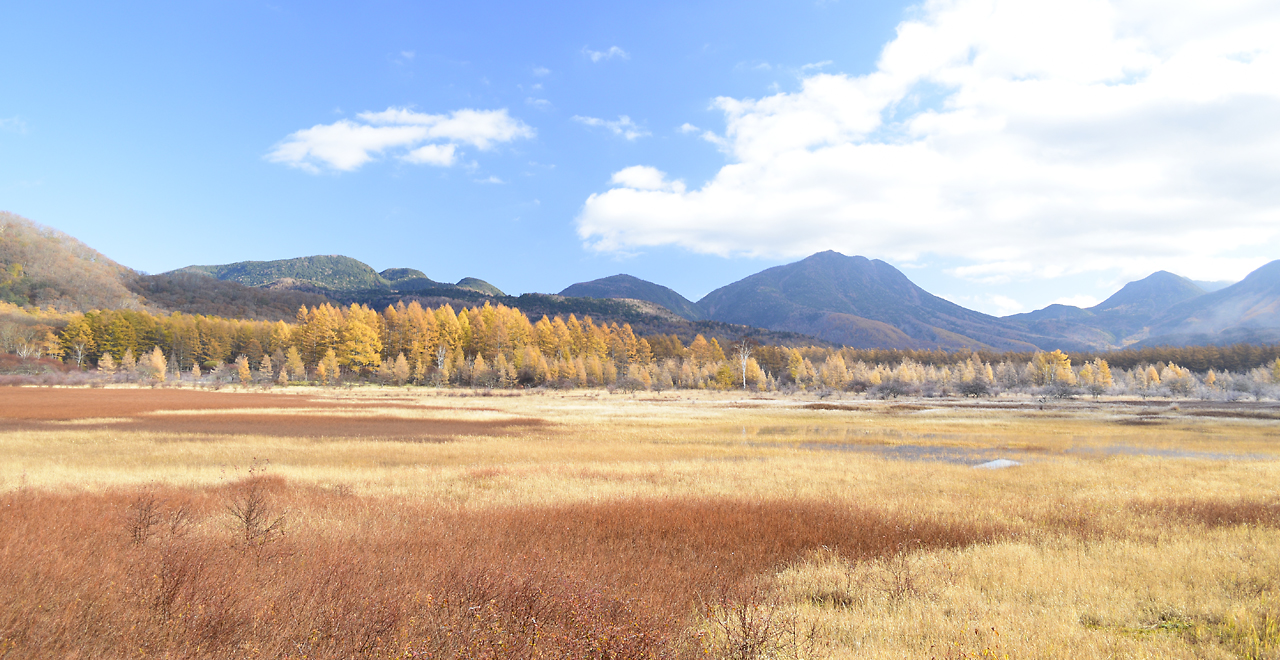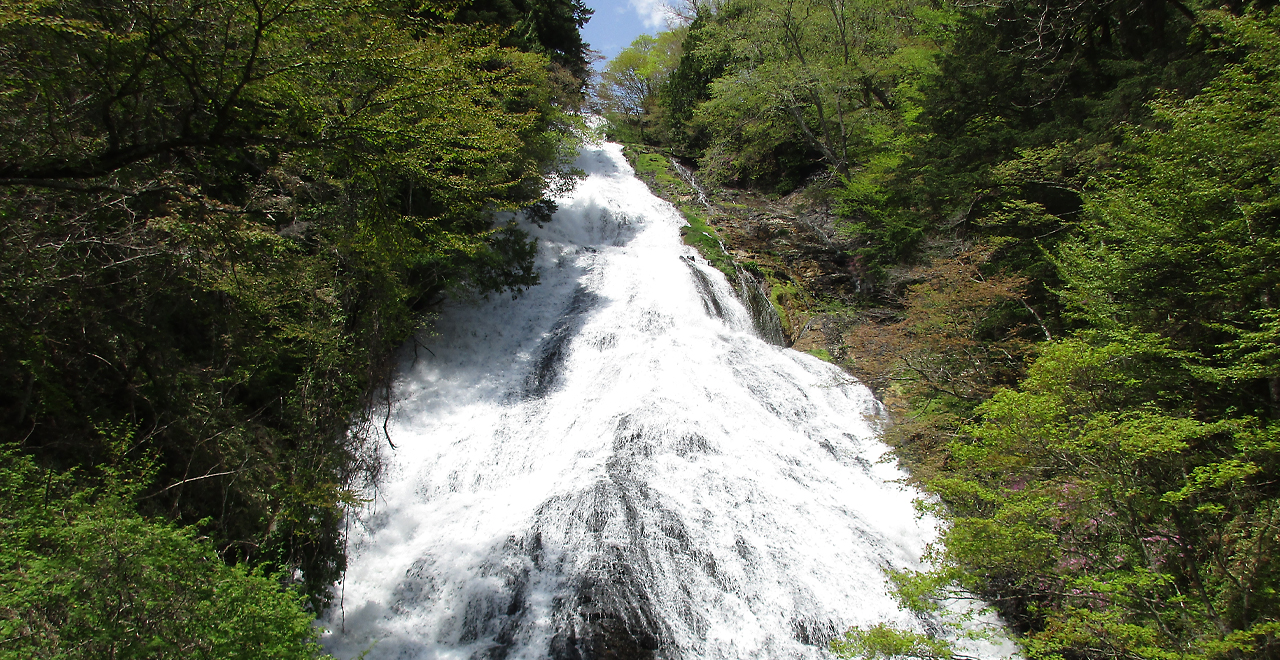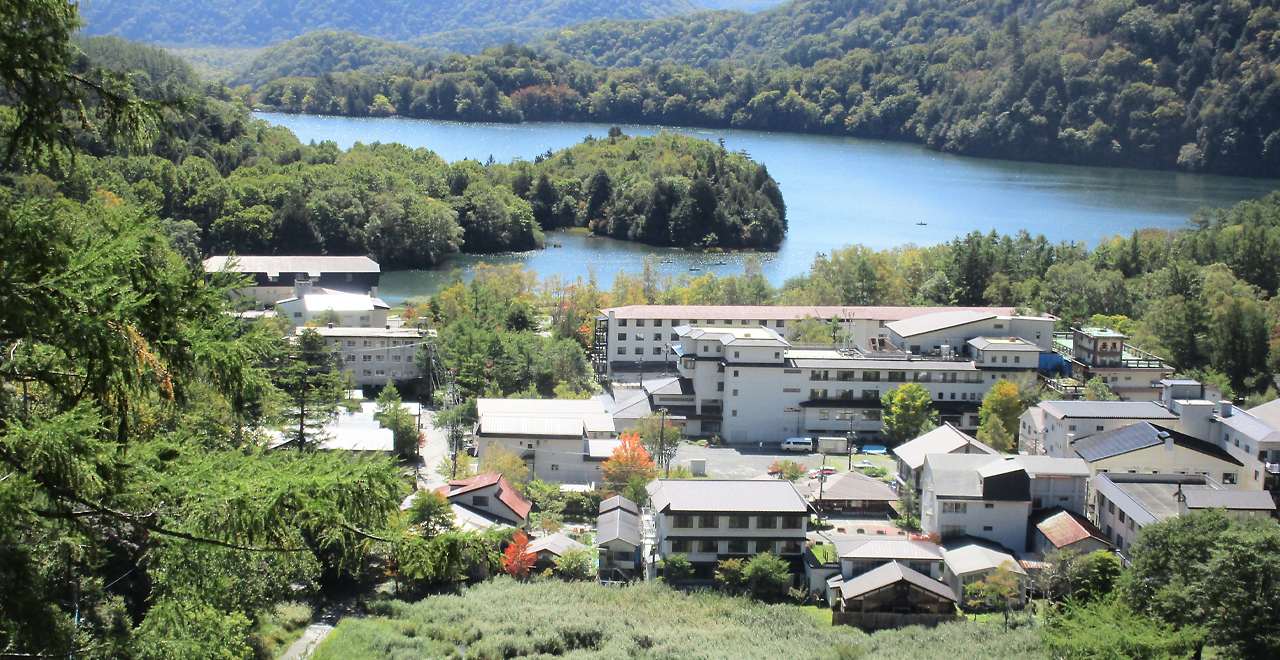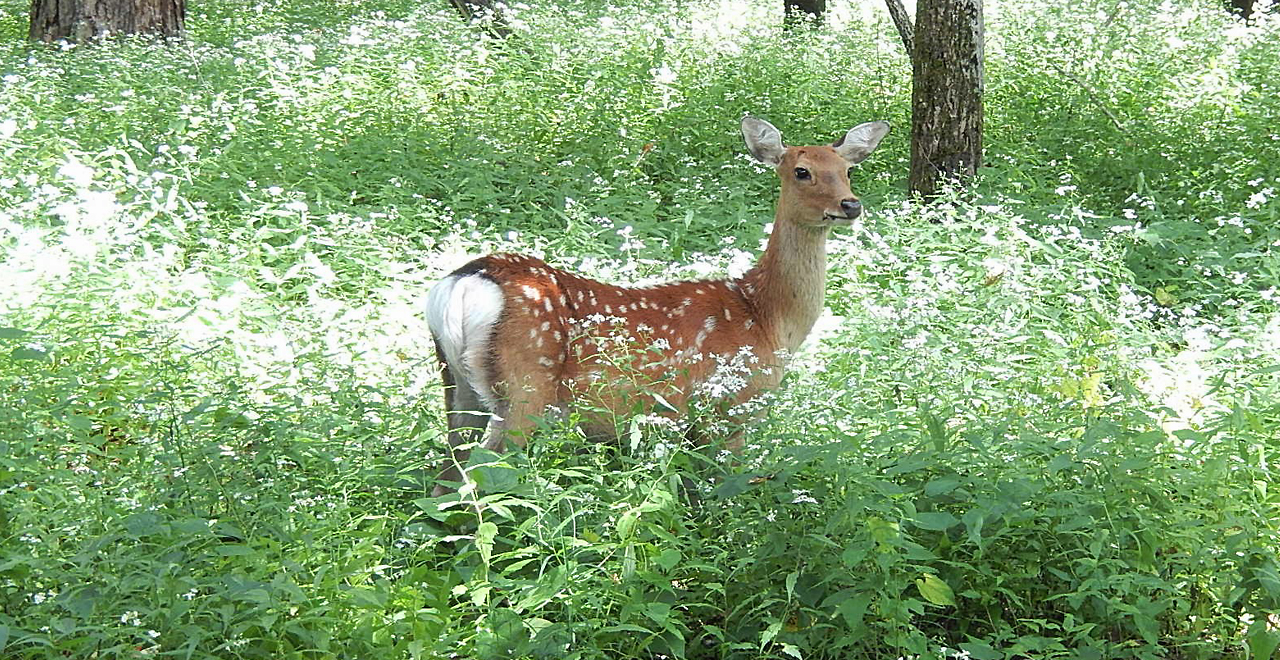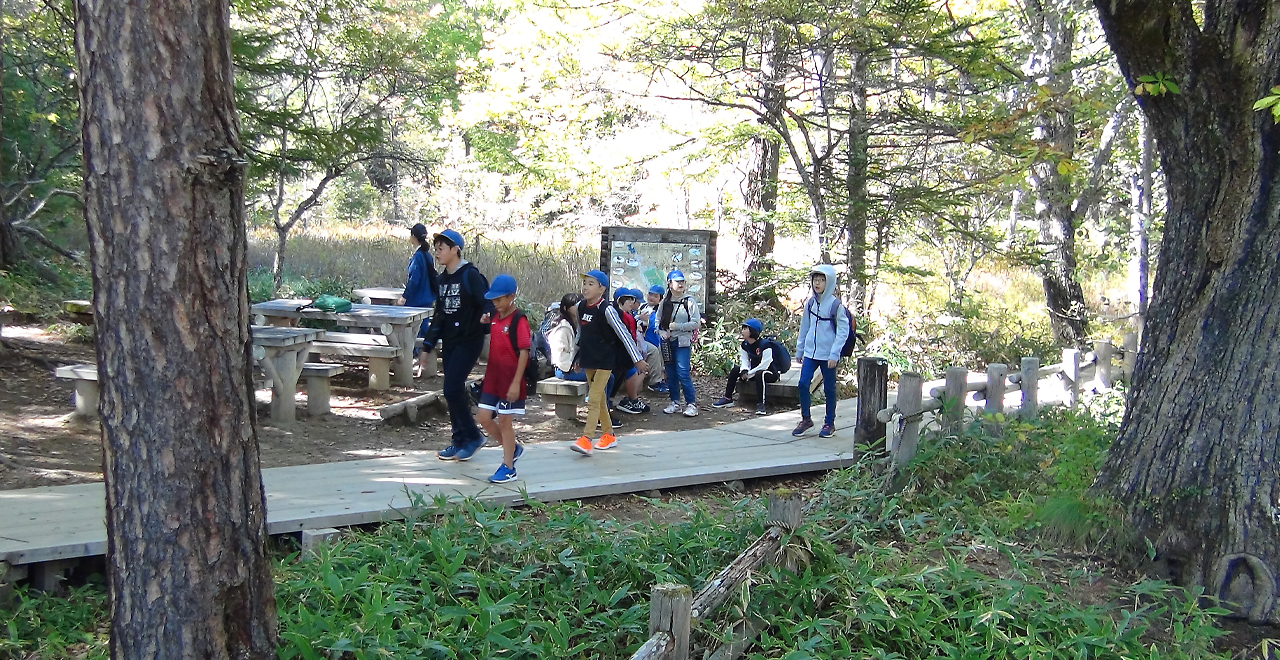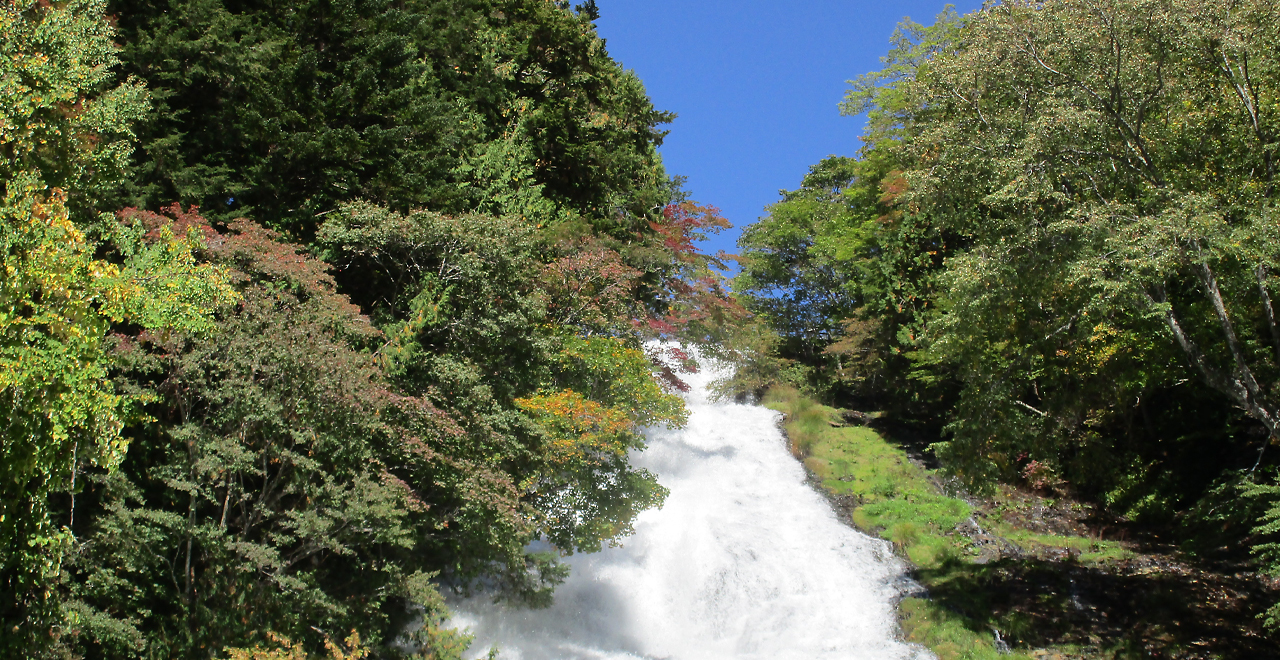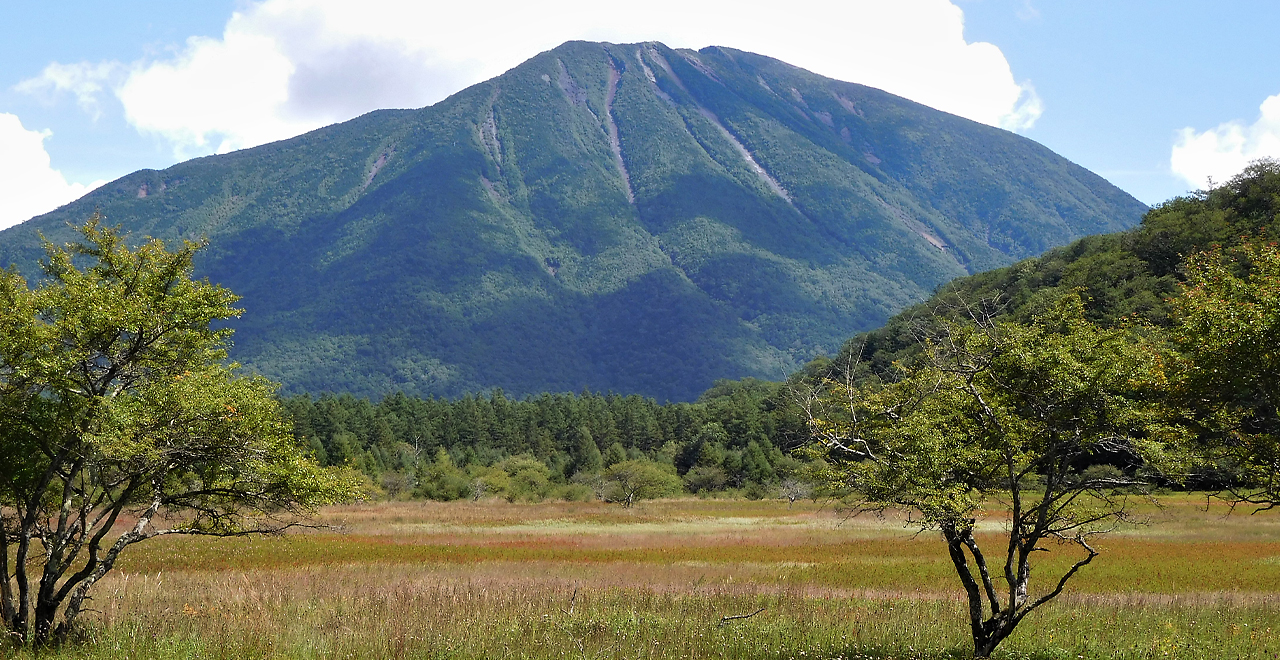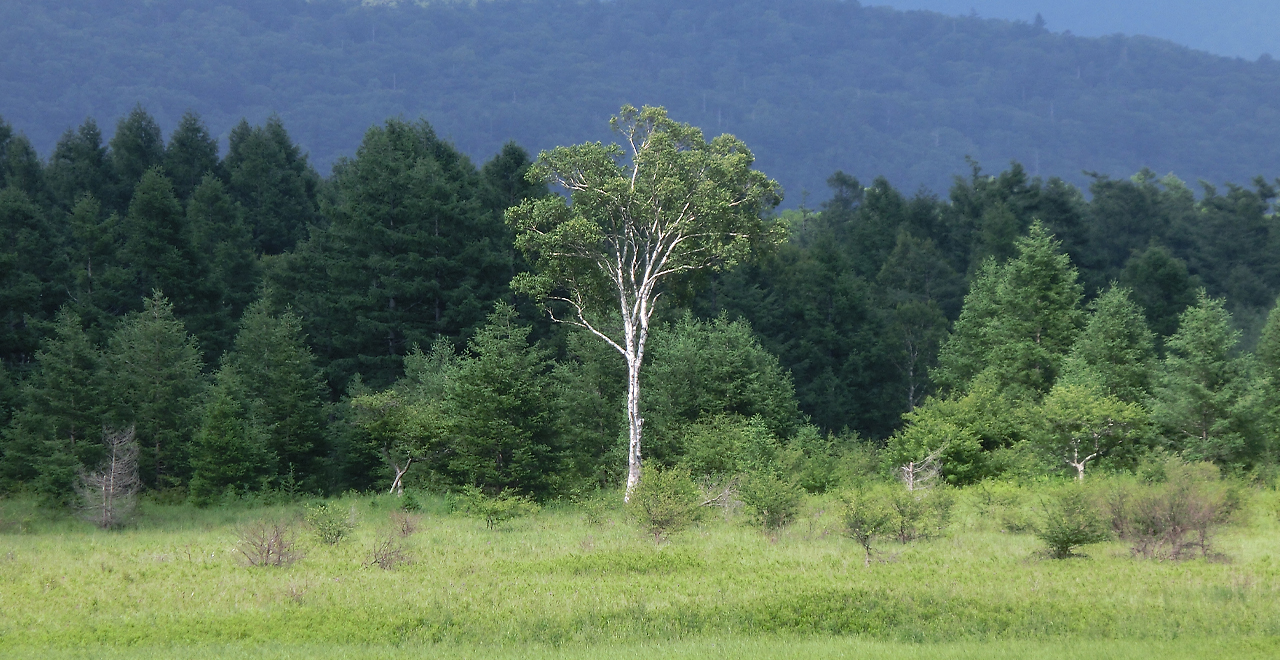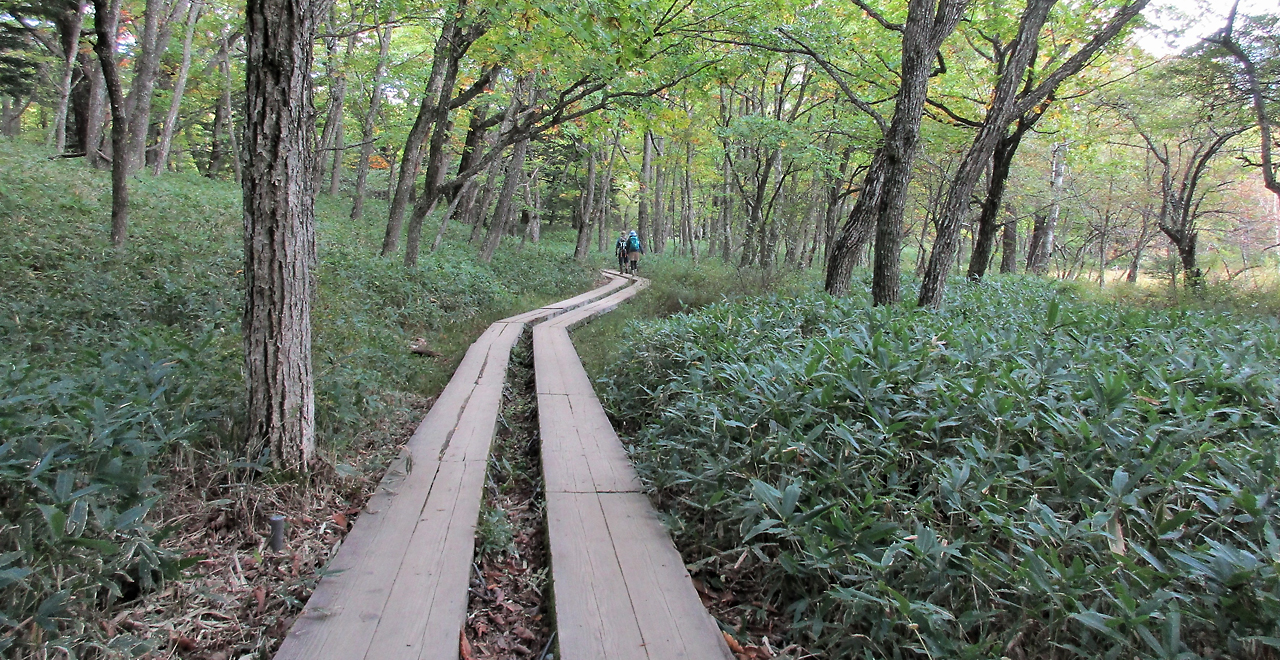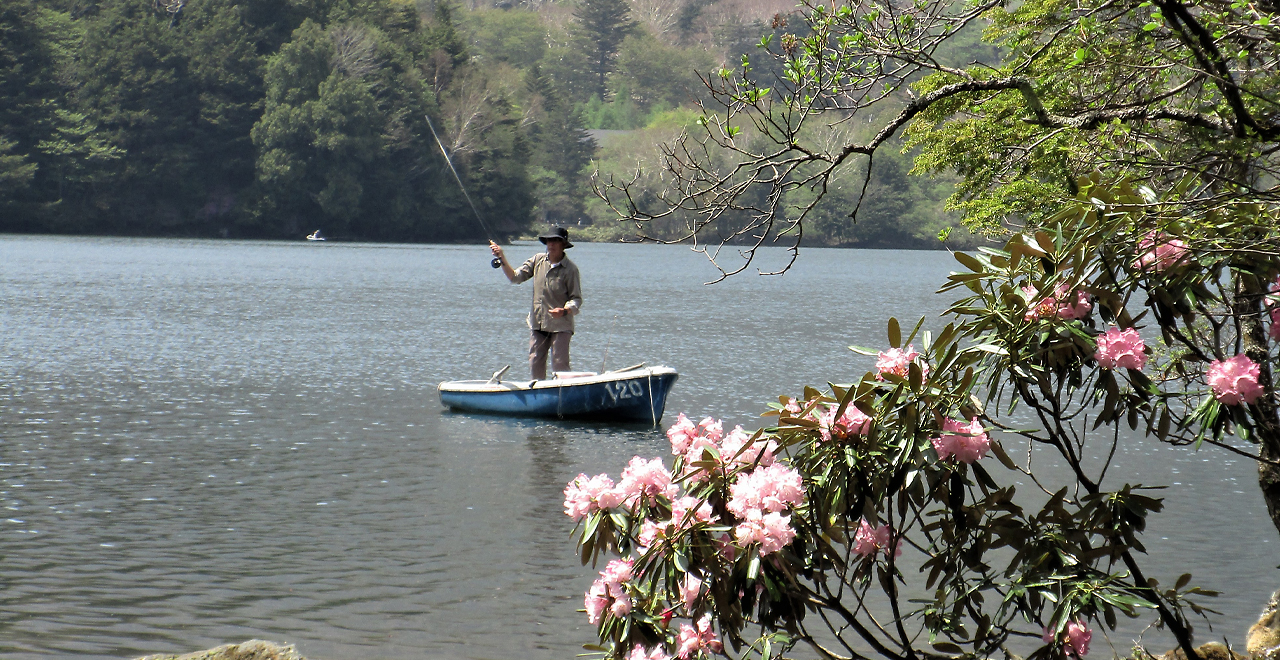Odashiro & Yunoko (Lake Yunoko) Recreation Forest
381.10ha
Elevation Lowest: 1,380 m / Average: 1,400―1,460 m / Highest: 1,540 m
A place of retreat in world-famous Nikko:
fascinating waterfalls, marshlands and lakes
A place of retreat in world-famous Nikko:
fascinating waterfalls, marshlands and lakes
- Newest information
- Area
- Activities
- Overview
- Latest Information
- Usage Guide
- Facility
- Map
- Location
- Access
(Distances and times are
provided as a guide only) - Management office
contact details - Information on Other Local
Tourist Attractions - Official Tourist Information
- Recreation Forest
Management Committee - Supporters
- Other
- Newest information
- CHECK
Please visit official tourism websites for the latest updates and information.
- Area
- Kanto
- Activities
- Flower-viewing(species: Akayashio (Rhododendron pentaphyllum Maxim. var. nikoense Komatsu), azaleas)(Includes surrounding area) Autumn leaf viewing (Includes surrounding area) Waterfall viewing (Includes surrounding area) (Payment required for use of facilities and participation in activities) Birdwatching (Includes surrounding area) Paddling / fishing / boating (pond / lake / river) (Includes surrounding area) Bicycle rental(Outside the forest) Ski resort (no. of trails: 4) (Outside the forest) Shrine / Temple (Outside the forest) (Payment required for use of facilities and participation in activities)
- Overview
-
- Geographical/topographical features
- Oku-Nikko is surrounded by major mountains in the Nikko Volcano Group, such as Mt. Nantai (2,846 m) and Mt. Nikko-Shirane (2,578 m).
It comprises Senjogahara Marshland, Lake Chuzenji, Lake Yunoko, Yudaki Falls, Ryuzu Falls and Kegon Falls and offers typical mountain landscapes.
As it is relatively close to the Tokyo metropolitan area, many students on school trips and tourists visit Oku-Nikko in the summer, seeking to enjoy marshland flowers and cool breezes.
In Odashirogahara Marshland, which consists of approximately 100 ha of marshlands and grasslands, there is a popular Shirakaba (Japanese white birch (Betula platyphylla var. japonica Hara)) tree called "Lady of Odashiro," which is famous among photographers.
Also, when the area receives a lot of rain, water accumulates in a low-lying area, temporarily creating Lake Odashiro. The lake most recently appeared in 2018 for the first time in seven years. - Historical/cultural features
- From the late 19th to early 20th century, many residents of Japan from overseas built vacation homes on the Lake Chuzenji lakeside, making the area a summer resort.
Nikko became known to the world through books written by a British envoy, Sir Ernest Satow, and a female traveler, Isabella Bird.
In 2005, Oku-Nikko Marshland (covering Lake Yunoko, the Yukawa River and Senjogahara and Odashirogahara Marshlands) was designated as a registered wetland under the Ramsar Convention as an important stopover site for migratory waterfowl. - Climate, flora and fauna
- As Oku-Nikko is a highland area, it enjoys cool, humid conditions in the summer and receives little snowfall in the winter.
However, due to the low temperature, snow tends to remain for a long time without melting.
It is a cold area with large daily temperature fluctuations. Lows can even drop to -20°C on some clear winter mornings.
Starting at an elevation of about 1,500 m, evergreen conifer forests can be found, consisting of trees such as Shirabiso (Abies veitchii Lindl.) and Kometsuga (northern Japanese hemlock (Tsuga diversifolia)).
Areas below 1,500 m in elevation are covered by deciduous broad-leaved forests of Mizunara (Japanese oak mizu-nara (Quercus crispula Blume)), Shirakaba (Japanese white birch (Betula platyphylla var. japonica Hara)) and Harunire (Japanese elm (Ulmus davidiana var. japonica)).
Various flowers bloom in the unique landscapes of Oku-Nikko. Several varieties of azaleas bloom from spring to early summer, including Akayashio (Rhododendron pentaphyllum Maxim. var. nikoense Komatsu) and Azuma Shakunage (Rhododendron degronianum Carrière). Hozakishimotsuke (Spiraea salicifolia) and Watasuge (tussock cotton-grass (Eriophorum vaginatum L.)) form clusters in Senjogahara and Odashirogahara Marshlands from early summer until the end of summer.
The entire area of Oku-Nikko is a habitat for Tsukinowaguma (Asian black bear (Ursus thibetanus)). In recent years, the number of Nihonjika (shika deer (Cervus nippon)) has surged. This has caused problems as the deer feed on the bark of trees such as Japanese oak mizu-nara and Karamatsu (Japanese larch (Larix kaempferi)) and marshland plants. - Attractions
- The autumn leaves in Oku-Nikko have been extensively promoted by the media as a signature autumn feature of the area. Visitors can view the cascading water and crimson foliage at Yudaki Falls, and the variegated autumn-colored grass and golden yellow leaves of Japanese oak mizu-nara and Japanese larch in the Senjogahara and Odashirogahara Marshlands.
Hikers should drop by the Nikko Yumoto Visitor Center or the Akanuma Nature Information Center before setting out. These facilities provide useful information, including on natural points of interest in the vicinity, up-to-date information on hiking courses and displays concerning local flora and fauna and history.
Buses can be used to access various hiking courses. The forests and animals such as Kitsune (fox (Vulpes vulpes)), and Ten (Japanese marten (Martes melampus)) can be seen from the bus windows.
Nearby Yumoto Onsen (hot spring) is a good place to relieve fatigue after hiking and it also offers a free footbath. This onsen is said to have been discovered about 1,200 years ago by a Buddhist priest named Shodo Shonin who founded the Nikkozan Rinnoji Temple. The onsen water is sulfurous and contains a large amount of metasilicic acid. It is good for easing neuralgia, recovering from illnesses and beautifying the skin. - Other
- The area is a habitat for Kuma (bear (Ursidae)), so please check the bear sighting information at the Nikko Yumoto Visitor Center or other information sources.
- Latest Information
-
- Warnings (Flora and fauna)
- Bears often appear in the forest, so please carry a bear bell to avoid them.
- Warnings (Dangerous areas)
- Please exercise extreme caution when walking on the footpaths during the winter due to snow and ice.
- Others
- The Oku-Nikko area is extremely cold in the winter and early spring, so take sufficient measures against cold.
- Usage Guide
-
- Entrance fee
- Free
- Operating hours and seasons
- Accessible 24 hours a day, 365 days a year
- Staffed facilities such as administration buildings [Outside the forest]
- [Nikko Yumoto Visitor Center]
・Operating season: Every day from April through November
・Operating hours: 9: 00 am – 4: 30 pm
* The hours change with the seasons. Please check the center's website[External link] - [Akanuma Nature Information Center]
・Operating hours: Resting space / 8: 00 am until the final bus arrival time
・Exhibition space / 9: 00 am until the final bus arrival time
・Operating season: Late April through late November (every day from June through October; closed on Mondays (Tuesday if Monday is a national holiday) in April, May and November)
・Entrance fee: None - Accommodation options
- Many accommodation facilities and campsites can be found at Yumoto Onsen―considered a place of retreat for Oku-Nikko―and by the lakeside at Lake Chuzenji. It takes about 10 minutes on foot from Yumoto Onsen to Yudaki Falls in the Recreation Forest.
- Facility
- Toilets and drinking fountains (Includes surrounding area) Toilet (accessible)(Outside the forest) Walking trail (Includes surrounding area) Parking lot (Includes surrounding area) (Payment required for use of facilities and participation in activities) Observation platform (Includes surrounding area) Visitor center (staffed only)(Outside the forest) Vending machine (Includes surrounding area) Shop (Closed during the winter) (Includes surrounding area) Restaurant (Closed during the winter) (Includes surrounding area) Campsite (Closed during the winter) (Outside the forest) (Payment required for use of facilities and participation in activities) Free public wireless LAN (Wi-Fi) (Outside the forest) Specimen forest/Botanic garden (Outside the forest) (Payment required for use of facilities and participation in activities) Resource center/Museum (Outside the forest) (Payment required for use of facilities and participation in activities) Cultural asset (nationally designated) : Shrines and temples of Nikko (Outside the forest) (Payment required for use of facilities and participation in activities) Accommodation facilities (Hotels/Japanese inns) (Outside the forest) Hot Spring (Outside the forest) (Payment required for use of facilities and participation in activities)
- Map
- Location
- Yumoto, Nikko City, Tochigi Prefecture
- Access
(Distances and times are provided as a guide only) -
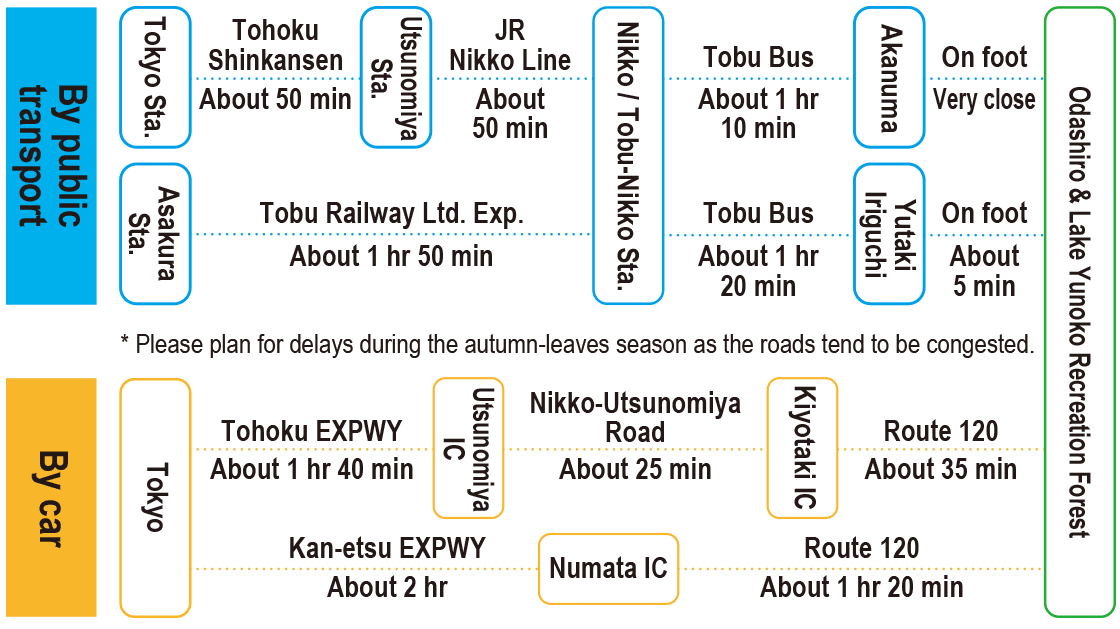
-
Parking lot capacity / parking charges
- ・Prefectural Akanuma Parking Lot (closed in winter)
- Free parking for 152 ordinary vehicles and 10 large vehicles
- ・Sanbonmatsu Park Parking Lot
- Free parking for 183 ordinary vehicles and 23 large vehicles
- ・Yudaki Falls Parking Lot
- Free parking for 58 ordinary vehicles and 15 large vehicles / Fee required except in winter (ordinary vehicles 500 yen, large vehicles 2,000 yen)
- Nearby tourism facilities
- Visitors can visit the historic buildings of Nikko Toshogu Shrine, Nikkozan Rinnoji Temple and Nikko Futarasan-jinja Shrine, which have collectively been named a UNESCO World Heritage site (30 minutes by car from the Akanuma Parking Lot). Kegon Falls is also in the area, where the waters of Lake Chuzenji dynamically plunge down a 97 m cliff (13 minutes by car from the Akanuma Parking Lot).
- Management office contact details
-
Nikko District Forest OfficeTEL:0288-22-1069
- Information on Other Local Tourist Attractions
-
Nikko Yumoto Visitor Center [External link]
- Official Tourist Information
-
Nikko Kinugawa Travel Guide (Nikko City Tourism Association / External link)
- Recreation Forest Management Committee
- ー
- Supporters
- ー
- Other
- ー





